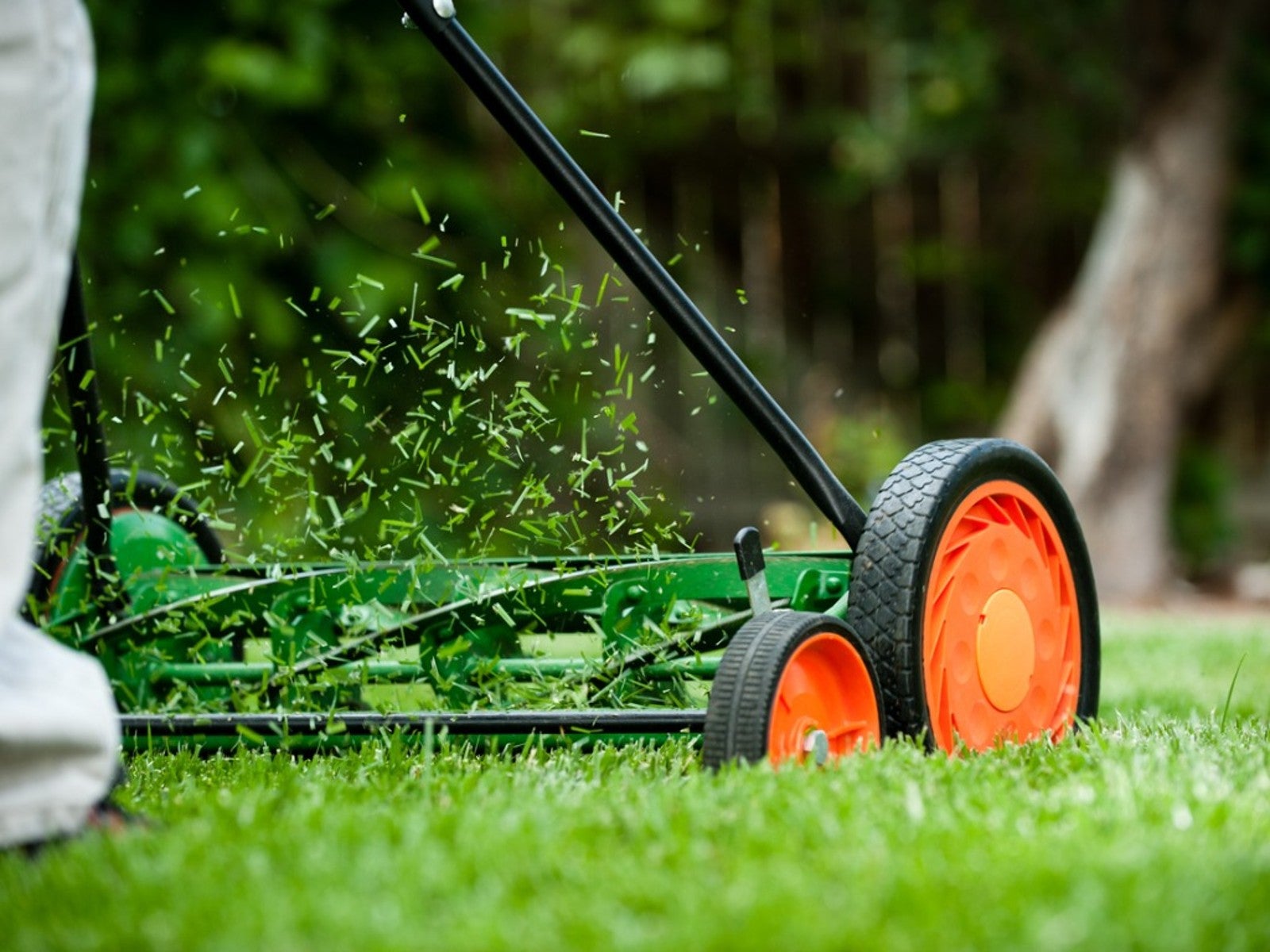Why A Manual Push Mower Is Good For You And The Environment

There are over 80 million lawns in the United States, most of which get cut on a fairly regular basis. Today most people cut their lawn with an electric or gas powered mower but years ago the only option was a manual push lawn mower or reel mower which was powered by human labor. Interestingly reel mowers are making a comeback. Why? Read on to learn about reel mower pros and cons.
What is a Reel Mower?
A reel mower is the type of lawn mower your grandparents would have used to cut the grass. It is a man (or woman) powered grass cutting machine that consists of multiple blades that cut grass vertically rather than horizontally as modern gas and electric mowers do.
These vertical blades make a scissor-like motion to cut blades of grass as the machine is pushed manually. For those who eschew the labor involved in pushing a reel mower there would seem to be no benefit, but there are other benefits of a reel mower beyond exercise.
Physical Benefits of a Reel Mower
Obviously your physical labor is what is used to propel a reel or push mower. Manually pushing a mower can help you to burn between 400 and 500 calories per hour.
To get the most out of your lawn mowing workout you should use your legs and hips to drive the movement of the machine. Maintain an erect posture as you are mowing with your elbows slightly bent and shoulders relaxed; avoid hunching your back.
Not only will using a reel mower help you maintain your weight but it will add to your cardiovascular exercise for the day and aid in building muscle.
Reel Mower Pros and Cons
We’ve established that using a push mower can be good for your health but what other benefits or detriments does it have? If you are not in good health a push mower isn’t for you. It does require strength and stamina and may not be suitable for people with a number of ailments.
Sign up for the Gardening Know How newsletter today and receive a free copy of our e-book "How to Grow Delicious Tomatoes".
If you have a large area of lawn to cut, a push mower may not be the answer. A reel mower does take more time than a gas or electric or certainly a riding mower. That said, there are now gas powered reel mowers available that can help you mow those larger areas of turf.
Rotary mowers have a single blade that cuts horizontally while reel mowers have two blades that cut vertically giving the turf a cleaner cut.
Reel mowers are also environmentally friendly requiring no electricity, oil, or gas to propel them. Since there is no gas or oil, there is no danger of fuel spills. They also produce no noise pollution with the exception of some grunts from those pushing them.
Push mowers are also safer than their counterparts. Since the operation of the machine is reliant on pushing, there is no practical way for the user to accidentally harm a limb while the machine is in use. The spinning of the blades also does not encourage projectiles such as rocks or debris the way other mowers can. Lastly, the speed of push mower blades is significantly less than gas or electric machines, making injuries related to the machine practically impossible.
Reel Mower Maintenance
A manual push mower is made of steel, other metals, and plastic. It does not have rubber tubing, copper wiring, or other small component parts which means this type of mower is low maintenance.
Reel mowers require an occasional rinse with water, sharpening of the blades, and occasional application of oil to moving parts. The amount of oil used is much less than that needed to maintain a gas powered lawn mower, and even recycled waste vegetable oil can be used.
As far as sharpening the blades, it couldn’t be easier. Apply an abrasive paste found in a reel mower sharpening kit to the blades and push the mower. The blades will sharpen themselves as they spin.
Last Word on Reel Mowers
New gas powered models have four, five, and seven blades. The lower you want to cut the grass the more blades you need. The type of grass you are trying to cut makes a difference too. Heavier, bent grasses such as St. Augustine or Bermuda require a seven blade mower, while fine, thin grasses like Kentucky bluegrass or fescue cut best with a four or five blade. They also come in various widths. The wider the mower, the faster they will cut.
Lastly, while maintenance is a breeze, if you damage the blades on a rotary mower, it can easily be removed and replaced. Not so with a reel mower. Although this is a rarity, it will be harder and more costly to fix.

Amy Grant has been gardening for 30 years and writing for 15. A professional chef and caterer, Amy's area of expertise is culinary gardening.
